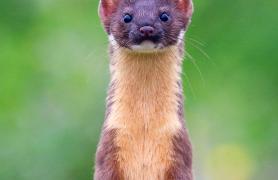Body
- River otters waste little time digesting their dinners. Once an otter munches and crunches a crayfish, it takes only an hour for the crayfish’s skeleton to turn up in the otter’s droppings.
- Pass the bug spray! During mild winters, ticks may become active in Missouri as early as mid-January. Frosty weather keeps the bloodsuckers at bay, which is one more reason to hope for some snow days.
- On rainy nights, grebes sometimes crash land on department store parking lots. Biologists believe the mixed-up birds mistake the shiny, wet pavement for water and think they’re plopping down in a marsh.
- Each year, bald eagles add new sticks to their old nests. After several years, a nest can become ginormous. One nest in Florida measured 10 feet across and 20 feet deep, and it weighed more than 4,000 pounds.
- Huddle up! In fall and winter, northern bobwhites snuggle together in a circle with their tails touching and their beaks pointing out. This arrangement keeps them warm and helps them watch forpredators.
- The shovel-shaped front paws of an eastern mole are huge compared to the rest of its body. If you were built like one of these wormslurping dirt-diggers, your hands would be as big as catcher’s mitts.
- A chestnut lamprey’s mouth looks like a suction cup filled with fangs. The vampire fish use their pointy pie holes to clamp down on other fish and suck out blood. Victims usually survive the ordeal but may die if the bite gets infected.
Also In This Issue
Media

Body
Learn to spot these cool combo creatures, and you’ll be likin’ it, too.
Media

Body
Welcome to the weasel family, Missouri’s largest clan of meat-eating mammals.
This Issue's Staff
Bonnie Chasteen
Les Fortenberry
Karen Hudson
Angie Daly Morfeld
Noppadol Paothong
Marci Porter
Mark Raithel
Laura Scheuler
Matt Seek
David Stonner
Nichole LeClair Terrill
Stephanie Thurber
Cliff White
Les Fortenberry
Karen Hudson
Angie Daly Morfeld
Noppadol Paothong
Marci Porter
Mark Raithel
Laura Scheuler
Matt Seek
David Stonner
Nichole LeClair Terrill
Stephanie Thurber
Cliff White






















